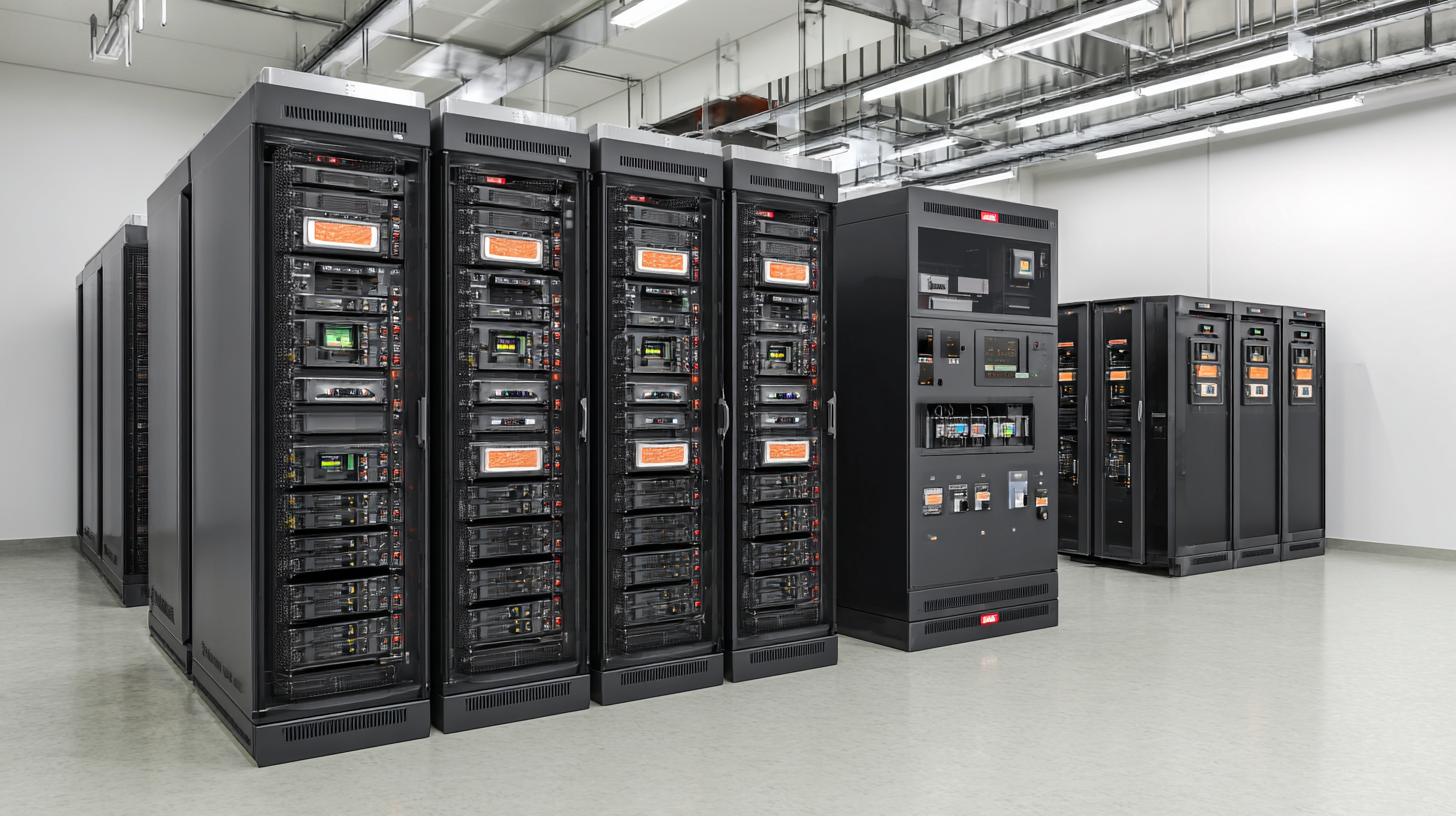7 Essential Facts About the Best UPS Backup System for Your Business Needs
In today's fast-paced business environment, ensuring uninterrupted operations is critical, which is where a reliable UPS backup system comes into play. According to a report by the Ponemon Institute, downtime can cost companies an average of $8,000 per minute, underscoring the importance of incorporating an effective uninterruptible power supply solution.

The global UPS market is projected to reach $18.40 billion by 2027, reflecting the growing demand for systems that provide essential support during power outages and voltage fluctuations. Businesses must prioritize selecting the best UPS backup system tailored to their specific needs, as factors such as capacity, runtime, and features can greatly influence performance and overall resilience.
By understanding the essential elements of UPS systems, companies can safeguard their operations against potential disruptions, ultimately enhancing productivity and protecting their bottom line.
Key Features to Look for in a Reliable UPS Backup System
 When selecting a reliable UPS backup system for your business, understanding key features is essential for ensuring uninterrupted operations. According to a report by MarketsandMarkets, the global UPS market is projected to grow from USD 10.4 billion in 2020 to USD 12.5 billion by 2025, highlighting the increasing importance of these systems in today's digital landscape. A reliable UPS should include automatic voltage regulation (AVR) to stabilize voltage fluctuations, which is crucial for protecting sensitive equipment. Furthermore, look for systems with a high power capacity, measured in VA (volt-amps), to ensure that all critical devices can remain powered during an outage.
When selecting a reliable UPS backup system for your business, understanding key features is essential for ensuring uninterrupted operations. According to a report by MarketsandMarkets, the global UPS market is projected to grow from USD 10.4 billion in 2020 to USD 12.5 billion by 2025, highlighting the increasing importance of these systems in today's digital landscape. A reliable UPS should include automatic voltage regulation (AVR) to stabilize voltage fluctuations, which is crucial for protecting sensitive equipment. Furthermore, look for systems with a high power capacity, measured in VA (volt-amps), to ensure that all critical devices can remain powered during an outage.
Tip: Always calculate the total power load of your equipment before purchasing a UPS. This will help you choose a system with an adequate power capacity to prevent overloads.
Additionally, consider the battery life and the type of batteries used. Lithium-ion batteries, for instance, typically last longer and require less maintenance than traditional lead-acid batteries. As reported by Business Wire, companies are shifting towards UPS systems that feature smart technologies for monitoring and management, enabling efficient operations and timely alerts for battery replacement or system status.
Tip: Research UPS systems with remote management capabilities, as this feature allows you to monitor performance and receive alerts without being on-site.
Understanding Different Types of UPS Systems for Business Applications
When selecting the best Uninterruptible Power Supply (UPS) system for your business, it's crucial to understand the different types available and their applications. There are primarily three types of UPS systems: offline (standby), line-interactive, and online (double-conversion).
Offline UPS systems offer basic protection and are ideal for home or small office environments. They activate during power disruptions, providing backup power but may not support sensitive equipment. Conversely, line-interactive systems are more advanced, featuring voltage regulation and are suited for businesses that require a reliable power supply for moderate equipment.
For more critical applications, online UPS systems provide the highest level of protection by continuously converting incoming AC power to DC power and back to AC. This ensures a seamless power supply and is essential for data centers and medical facilities where any interruption can lead to significant losses. Understanding these distinctions enables businesses to choose a UPS system tailored to their needs, ensuring operational continuity and protection against power fluctuations.
As the global UPS market continues to grow, driven by increasing demand in sectors like telecommunications and IT, choosing the right UPS system is more important than ever.
Assessing Power Needs: Calculating the Right UPS Capacity for Your Equipment
When assessing power needs for your business equipment, calculating the right UPS (Uninterruptible Power Supply) capacity is crucial. As the tech industry increasingly demands reliable power solutions—especially with the growth of generative AI—the importance of selecting an appropriately sized UPS cannot be overstated. The global data center UPS market is expected to grow from $6.12 billion in 2025 to $10.29 billion by 2032, indicating a robust market for power protection solutions that align with rising energy demands.
To determine the right UPS capacity, it's essential to categorize your equipment based on power requirements. The modular UPS market is segmented into various capacity ranges, including below 1.5 kVA, 1.5 kVA to 5 kVA, and up to over 200 kVA. By first calculating the total power consumption of your devices, you can select a UPS that not only provides sufficient backup power but also allows for scalability as your business needs evolve. Ensuring you have a UPS in the 5.1 kVA to 10 kVA range may be beneficial for many mid-sized data centers aiming for optimal operational reliability while managing the growing demands of advanced technologies.
How to Prioritize Equipment for UPS Backup During Power Outages
When it comes to prioritizing equipment for UPS backup during power outages, businesses must consider several essential factors. First, identify critical systems that require uninterrupted power supply, such as servers, networking equipment, and storage devices. These components are the backbone of operations, and any downtime can lead to significant data loss and financial repercussions. Assess the power requirements of each piece of equipment to ensure the UPS system can handle the load effectively.

In addition to prioritizing critical systems, businesses need to evaluate the redundancy options available. Choosing between configurations like “2N” and “N+1” can impact reliability and efficiency. A well-planned redundancy strategy not only enhances power availability but also provides a safety net against unforeseen outages. As the global UPS market continues to grow, with projections indicating an increase from $6.12 billion in 2025 to $10.29 billion by 2032, prioritizing equipment for UPS backup will become increasingly vital for maintaining business continuity in an ever-evolving landscape of power demands and potential disruptions.
Tips for Proper Maintenance and Testing of Your UPS Backup System
When it comes to ensuring the stability and reliability of power systems, proper maintenance and testing of your UPS (Uninterruptible Power Supply) backup system are crucial. A well-maintained UPS not only provides essential backup power but also protects electrical equipment from damage caused by voltage fluctuations and interruptions. The global UPS market, including data center applications, is expected to grow significantly, with projections indicating that the market size will rise from $6.12 billion in 2025 to $10.29 billion by 2032, reflecting a compound annual growth rate (CAGR) of 7.7%.
To maintain the efficiency of your UPS, regular testing and battery replacement are necessary. For instance, recent reports highlight that critical infrastructure like the Baotou Airport has been actively replacing UPS system battery packs to enhance power supply stability, particularly during high-demand seasons. Moreover, as data centers become the backbone of the information age, ongoing advancements in ICT technologies are driving a surge in UPS system deployments. The UPS market is projected to grow from an estimated $17.39 billion in 2024 to $24.91 billion by 2033, with a steady CAGR of 5.4%. This emphasizes the need for businesses to invest in proper maintenance practices to secure consistent operations.


